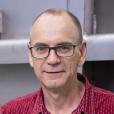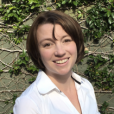
Showing 821 - 840 of 1879 results
A little ANSTO science ingenuity in software helps Mars helicopter flight
ANSTO has made a contribution to the successful NASA/JPL Ingenuity helicopter flight on Mars through instrument scientist, Dr Andrew Nelson, who was one of the many developers of the open-source software SciPy used in the flight.

Consultancy
Our experienced team of engineers, metallurgists, chemists and scientists have a proven track record of working with our clients in Australia and around the world to design and evaluate novel flowsheets and improve established processes.
Research highlights published and Swiss delegation visits

New User Symposium 2023 Program
Timetable and Teams links

Visit our Sydney facilities
ANSTO's Sydney locations are home to the Open Pool Australian Light-water (OPAL) multi-purpose reactor, the Centre for Accelerator Science (CAS), the Australian Centre for Neutron Scattering, the National Research Cyclotron and the National Deuteration Facility.
Ned Kelly mysteries finally unravelled

Periodic table photo competition results
This science week ANSTO (August 10th - 18th) is running a classroom competition using the ANSTO Periodic Table and our new ANSTO XR app.

Opportunities
Interested in a scholarship or graduate position at ANSTO? Review the opportunities at a glance.
The 2021 ANSTO Australian Synchrotron Stephen Wilkins Medal
ANSTO is seeking nominations for the ANSTO Australian Synchrotron Stephen Wilkins Thesis Medal.
The 2022 ANSTO Australian Synchrotron Stephen Wilkins Medal
ANSTO is seeking nominations for the ANSTO Australian Synchrotron Stephen Wilkins Thesis Medal.
A full year of cold neutrons at OPAL
New closed-cycle refrigerator successfully commissioned on WOMBAT
Collaborative research brings new insights into radioactive waste, nuclear fuel and nuclear waste forms
ANSTO researchers have demonstrated longstanding expertise in the study of nuclear fuel and radioactive waste with two recent journal articles in a special issue of Frontiers of Chemistry.
Using the power of artificial intelligence to help detect disease
An international collaboration led by The University of Sydney and supported by ANSTO has developed an advanced, innovative artificial intelligence application that could be used to help examine tissue samples and identify signs of disease/

Stephen received his PhD (Physical Chemistry) from Griffith University in 1996.

Dr Valerie Mitchell is a beamline scientist on the X-ray Absorption Spectroscopy beamline at the Australian Synchrotron.
Exchange of expertise
A specialist in particle therapy treatment planning from the Mayo Clinic in the US, Professor Chris Beltran, recently visited ANSTO for an exchange for information.
Non-invasive skin cancer treatment manufactured by ANSTO in Southern Sydney
ANSTO has been licensed as the Australian manufacturing partner of an innovative, non-invasive treatment for non-melanoma skin cancer (NMSC).